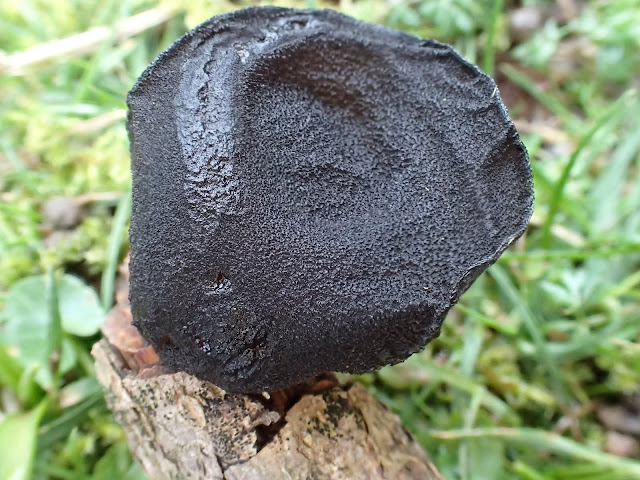
A steam train whistles past. Little do the passengers know what lichens they are missing. Whelpstone Crag in the background. The stile where I started recording lichens in the foreground.
The more observant of you, my assiduous followers, (are there any?) may have noticed that I have leapt from SD86 - 04 (in May last year) to SD 86 - 10 today - 29 Feb 2020 - (Yep, it's a Leap Year)
This is the 11th post in a series about lichens in all the 1km squares in Hectad SD86, centred on Settle and Malham. (Rathmell - Helwith Bridge - almost Darnbrook, Malham)
What happened to monads 05 to 09 in the first row of my hectad? From Huntworth Common and Giggleswick Scar to Helwith Bridge?
I did survey them (parts) and found nice lichens and brilliant scenery. Writing up their blog posts must follow later.
But now it is 2020 -
For those new to my series, do visit SD - 00 - Rathmell to see a full explanation of this project.
I am going to record all the 100 monads (1km squares) in my home hectad (10 by 10km square)- or at least make a small sample visit to each of them.
Last year I visited the first ten in a row, south to north. (plus a few scattered elsewhere in the square).
Now a whole year later, I am starting again, recording a parallel row.
If I can find 18 or more species then this monad can be coloured yellow on Janet Simkins's map (The British Lichen societies map of the distribution of lichens in Britain).
And today I found 18!! 18 I can put names to.
Somewhere in the eye of storm Jorge there was a quiet period this afternoon. Jorge (which has come from Spain) is pronounced "horkhay". It is the fourth rainstorm we have had in 4 weeks . You can see the flooding left by the previous three in the picture.
So off I set.
First stop was near the stile pictured in the foreground in the gritstone wall at the top of this blog.

Candelariella vitellina

Candelariella vitellina
Here there was some Candelariella vitellina on the top of the capstone next to the stile. Even though the thallus is thick, the granules are not rounded and compacted enough to be C coralliza
See Mark Powell's Twitter post
Further along the wall (south of the above, and south facing)

Pertusaria corallina

Pertusaria corallina
When alkali was added it turned yellow, and did not turn red after 2 minutes, so I'll stick with P corallina, not P pseudocorallina
If you watch this not very brilliant video of the steam train, in the wind, you'll see I pan round and zoom in on a fallen oak branch, before finishing with a view up the south north line of the edge of my hectad looking towards snow capped Ingleborough.

I used this tree to send records to Janet's Epiphytic survey of northern trees.
Looking at a fallen branch is much easier than peering through binoculars at waving branches in the wind.
I found Ramalina farinacea and Evernia prunastri but nothing special
On one branch was this interesting black jelly fungus:, 2cm across, and cup shaped below. It is Exidia glandulosa or known as Witches' Butter since at least 1741. It is said to be based on a folk belief that witches milk cows at night and scatter the butter around.

Another one.

On a stone in the ground, almost as a was leaving the monad, I saw some big black apothecia 3mm across - must be Porpidia macrocarpa

Porpidia macrocarpa
Finally another view of the train

Researching from from the "Winter Cumbrian Mountain Express" description: An electric train came from Euston to Preston to Carnforth. then people transferred to the "British India Line" "We then enjoy a circular steam tour outwards via Shap to Carlisle and back via the Settle and Carlisle line, hauled by 35018 British India Line.
No comments:
Post a Comment